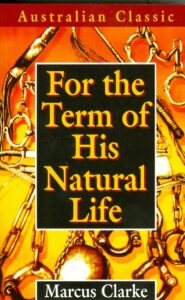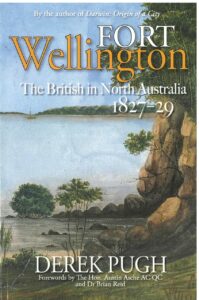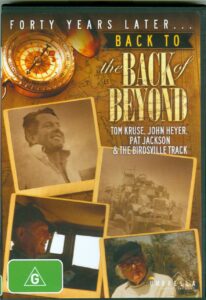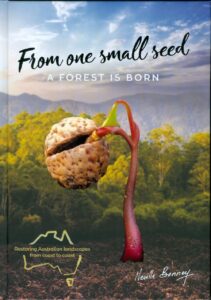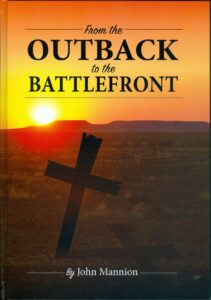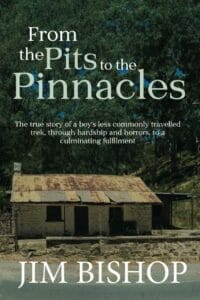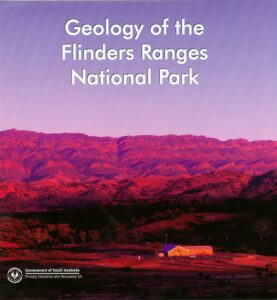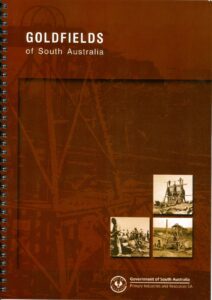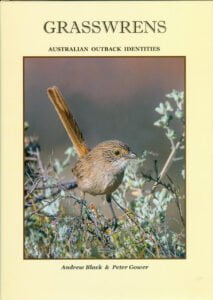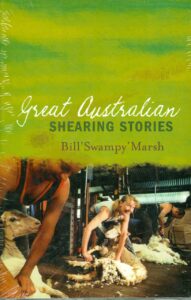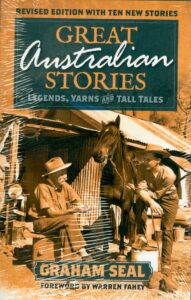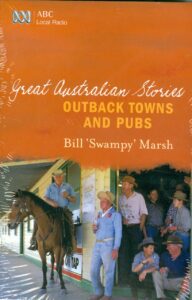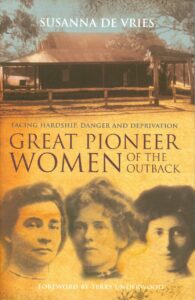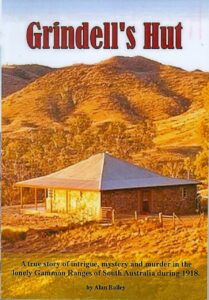Shop
Marcus Clarke’s famous historical novel FOR THE TERM OF HIS NATURAL LIFE is ore than one of Australia’s greatest and most widely read classics. It’s a horrifying, compelling story of suffering and survival under desperate conditions.
Drawing its material from the appalling but authentic annals of Tasmania’s haunted past, it tells of a man who has been born to wealth and comfort yet is transported to the convict island on a murder charge of which he is innocent – and against which he cannot defend himself without betraying his own mother.
Amid searing, unforgettable descriptions of his sufferings at Port Arthur, Macquarie Harbour and the infamous Norfolf Island, the tale unfolds a disturbing and brutal panorama of people and events.
Yet excitement never flags as convicts and overseers all play their parts in the drama – vying for the reader’s attention with flogging, rape, mutiny, disease, escape and even cannibalism.
Read More
Fort Dundas was the first outpost of Europeans in Australia’s north. It was a British fortification manned by soldiers, marines and convicts, and built by them on remote Melville Island in 1824. It lasted until 1829, when it was abandoned and left to the termites. In its short existence we have tales of great privation,…
Read MoreThe Iwaidja woman, her belly opened by a bayonet, slipped below the dark water. Her 6-year-old daughter, Reveral, watched in terror. Her baby sister was already dead, hit by a slug in the first volley or drowned, but a young man lying on the sand with his intestines spilling out had to be finished off – out of mercy! Reveral, wounded in her side, was carried back to the fort in triumph, for she was worth a £5 reward from Commandant Smyth.
Capturing an Australian was how the British sought to make friends with the Iwaidja, on whose lands the new British garrison of Fort Wellington was being built. It was an appalling start, but eventually, with the remarkable Captain Collet Barker in charge, friendships were established. At last, it looked like a successful trading settlement would follow, the British would live in peace with the local tribe, and they would welcome, and protect the Macassan fisherman, who came annually to the peninsula for trepang.
But then, a twice ship-wrecked captain struggled ashore with the order to abandon the north coast altogether, and the soldiers, Royal Marines, convicts, their families, and even Reveral herself, wearily packed up the settlement and moved on, leaving the fort and its gardens to the Iwaidja. ‘Another of our sweet, nice, wise, profitable, gingerbread, out of the way plythings is to go’, rejoiced The Australian in 1829.
This is the extraordinary forgotten story of the second attempt at settling Australia’s north coast.
With a foreword by His Honour the Honourable Austin Asche AC QC, the 13th Administrator of the Northern Territory.
Read MoreForty years after legendary filmmaker John Heyer captured a uniquely Aussie adventure on film, we revisit the dusty outback once more as dedicated postman Tom Kruse returns to the rugged Birdsville Track to relive his past and comment on the future of outback Australia.
Exploring past endeavours and investigating significant changes across the decades, Back To The Back of Beyond looks at the developing countryside, where the 300-mile track that was used by Aboriginal people trading between north and south became such an important lifeline to outlying cattle stations.
Read More
From One Small Seed is a comprehensive guide to Australian native plants and their seeds.
Over 700 species from 63 families and 240 genera are described with their identifying features of flowers, fruits and seeds illustrated. Each species description is accompanied by a distribution map and information about pollinators, seed dispersal, seed collection, propagation, ecology and Aboriginal names and uses. Species information is supported by introductory chapters on our changing landscapes and related topics.
South Australian Outback people are resourceful and generous contributors to communities, their families, businesses, the State economy and to the nation. It’s no different in times of war. Through this book we can begin to understand how men and women of the South Australian Outback contributed their services – and sometimes their lives for their country. Whether at home knitting socks for soldiers or raising stock for slaughter; whether meeting the need for horses or volunteering on the home front, people of the SA Outback played their part.
Read MoreBy the time he was 15, the author had lived at 10 different addresses and started over at seven different schools. At age fifteen he had lived enough torment and brutality, from his father who killed his mother in one of his violent rages when Jim was nine years old. Moving on, leaving behind, his father and his oldest, unfortunate, now adult brother. Jim still had much learning to do, through what was to be a very differently challenging, but in the end, rewarding and wonderfully satisfying culmination. Walk this amazing journey with Jim and discover how your road, yet to be travelled, need not be mapped, by that, travelled, so far.
Read MoreA geological map of the Flinders Ranges National Park area.
This map explains the Geological History of the Flinders Ranges and is an excellent Geolocical Map, it also has Fossil information about Stomatolites, The Ediacara Fauna, Cambrian Trace Fossils, and Cambrian Shelly Fossils
DRIVES in the area Arkaroo Rock, Rawnsley Bluff Lookout, Hucks Lookout, Stokes Hill Lookout, Great Wall of China, Brachina Gorge, Wilkawillina Gorge Road, Bunyeroo Valley, and Bunyeroo Valley Lookout
Walks or hikes to do , Wilkawillina Gorge, Bunyeroo and Wilcolo Creeks, Haywards Hut, St Mary Peak, Bridle Gap, and the Heysen Trail.
This map is a great learning tool for the whole family and great value.
This book is an interesting book for the Prospector, Fossicker or someone looking for history of GOLD in South Australia.
This book is a general account of the locations and early history of gold in South Australia. Gold was chased by many people in the early day and many people enjoy today to fossick for gold. Gold in South Australia’s historic goldfields occurs in quarts reefs associated with Precambrian rocks. The book contains early photos, topographic maps, information about the early mines and gold fossickers regulations and equipment.
The book contains 88 pages and is spiral bound. A handy prospectors/fossickers book.
Read MoreFurther published material is cited in the text and is fully referenced in the Bibliography. Our intention rather, is to present information from a variety of sources, much of which may not be found conveniently elsewhere, and some is otherwise unpublished.
Chapter 1 introduces grasswrens in their avian family the Maluridae and covers their distribution and the slowly emerging understanding of the group’s composition. It examines the discovery and naming of species, the long period in the first half of the 20th century, when little was learnt about them and much uncertainty prevailed, and finally, the last half century of progress towards our present still tantalisingly incomplete state of knowledge. Some may find Chapter 1 excessively technical and prefer to start with Chapter 2 which discusses the nature and behaviour of grasswrens, their subtle variety and the habitats that they occupy. There is a tight relationship between grasswrens and their habitats and we have therefore provided a relatively detailed account of that subject. Chapter 3 outlines some aspects of their social organisation, as far as it has been investigated. Much more research is needed in that field.
Why is one of our prime ministers in the Guiness Book of Records? Howmany beers did Rodney Marsh really drink? How did beer save the life of a bloke bitten by a bloody great big brown snake?
The ansers to these and many other burning beer-related questions can be found in the pages of this great Aussie
A beer barrel full of yarns, laughs and beer-related facts, this is the perfect book to flip through while you’re enjoying a cold one!
Read MoreAlthough he became an entertainer and writer instead, Swampy was always drawn to the life of Australia’s shearers. When he began collecting shearing stories for this book, he was interviewed on the ABC radio program ‘Summer All Over” and was inundated with callers from all over the country, all keen to pass on their own tales. The result is this marvellous collection that brings to life a world of outback stations, larrikins, roustabouts, sagacious dogs and occasionally strange cooks
Read More‘Great Australian Stories is true to its title as it wanders from bush track to spooky hollow, follows the path of yowies and bunyips, searches for Lasseter’s Reef, meets Dad and Dave and, on a different path, Henny-Penny, and then rambles into the cities where just as many entertaining characters are ready to tell their stories’
Read MoreAwarding-winning writer Bill Swampy Marsh collects yarns that get us in, hook, line and sinker. He gives us back our childhood and shares those precious memories of an Australia that’s passing into legend.
The people you’ll meet will touch your heart as Swampy brings to life all the drama and delight of life in outback Australia. There’s the story of Frederick Aloysius Millard, the only dog ever to become a member of a Citizens Club in Australia, thanks to the vote of a woman who was sure she’d been introduced to this ‘eccentric’ man twenty years back; the man who refused to go to the doctor after being shot, because he’d been hit in a very unfortunate spot … which made it obvious he’d been shot while running away; the unfortunate bloke who tried to blow a snake out of the dunny but ended up nearly taking himself out of existence.
Read MoreFrom the 1800s to the onset of World War I, Pioneers making their homes in outback Australia were joined by their wives, many of whom had no idea of the difficulties and dangers ahead.
Read More“Grindell’s Hut” by Alan Bailey. Formery titled “Cloud over the Gammon” A true story of intrigue, mystery and murder in the lonely Gammon Ranges of South Australia during 1918. A story of the fate that befell a station owner near Grindell’s hut. It is a fitting record of part of South Australia’s history.
PREVIOUSLY PUBLISHED AS CLOUD UNDER THE GAMMONS
Read More